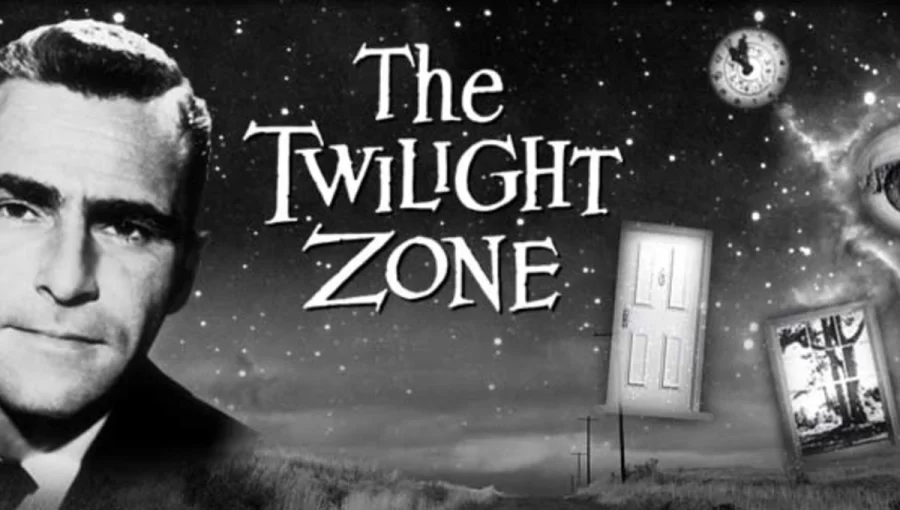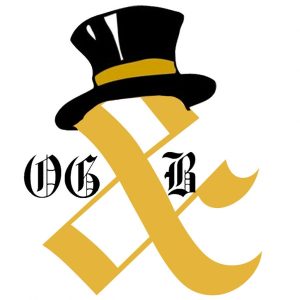“Black Mirror”, “The Twilight Zone” present valuable social commentary
Both shows spin dystopian narratives that offer insight into society
You are about to enter another dimension, a dimension not only of sight and sound but of mind. A journey into a wondrous land of imagination. Next stop, the Twilight Zone!
April 28, 2022
“The Twilight Zone” premiered on Oct. 2, 1959, and the world of television has never been the same. This television series by Emmy winner Rod Sterling blends the genres of horror, drama and science fiction — all the while reflecting on the fears of Americans at the time. In the 1950s there was the Red Scare and also an obsession with unidentifiable flying objects (UFOs). Both of these fears were fictionalized by “The Twilight Zone”, a show that sought to scare and intrigue viewers by presenting real-life issues in a fantastical light.
Episodes explored anything from a nuclear explosion leaving a man alone with his books, but then his glasses breaking, to a woman’s face bandaged up because she is so ugly, when in reality everyone around her is monstrous and she is beautiful, to earth being invaded by aliens. Sterling began every episode with a few prolific sentences that set up the episode and invited viewers into a magically terrifying place called “The Twilight Zone”.
Beastiality, imprisonment for free speech, chips placed inside children’s heads and a disturbingly real way to bring back a lost loved one. One may not think that those topics could fit neatly together under the umbrella of one television show but the show “Black Mirror” defies this misconception. In 2011, Charlie Booker, a satirist, social critic and screenwriter came up with the idea to make a modern-day “The Twilight Zone”.
Taking much inspiration from Sterling himself, Booker developed a TV show that would air on Channel 4 in the UK for its first two seasons. The success of “Black Mirror” caught Netflix’s eye, bringing this British show to the United States. Due to its anthology structure, “Black Mirror” can be cast under a myriad of genre definitions. Mainly, the show can be classified as a science fiction show with dystopian and psychological-thriller components. As each episode acts as a standalone, the series covers many topics that are all driven by the same societal reflection: where will our addiction to technology take us?
It is no secret that “Black Mirror” draws inspiration from “The Twilight Zone”, but where do these overlaps occur? As mentioned earlier, “The Twilight Zone” played on viewers’ fears regarding the government and extraterrestrial beings. “Black Mirror” also plays on modern-day viewers’ fears as it showcases the detrimental impact of technology and social media on our society.
Both shows are, at face value, entertaining and attention-grabbing. Under the surface, they are both social commentaries that act as a wake-up call and inspire self-reflection. Both shows are wonderful examples of how television is not only an art form, but also an analysis of the faults in our world. I can promise that any episode of “The Twilight Zone” and “Black Mirror” will leave you with your jaw on the floor. Below I will outline fourteen episodes that you won’t be able to stop thinking or talking about.
From “The Twilight Zone” I highly recommend “Time Enough at Last” (1.8), “The Four of Us are Dying” (1.13), “The Monsters are Due on Maple Street” (1.22), “The Eye of the Beholder” (2.6), “Five Characters in Search of an Exit” (3.14), “Dead Man’s Shoes” (3.18) and “Nightmare at 20,000 Feet” (5.3). From Black Mirror I highly recommend “The Entire History of You” (1.3), “White Bear” (2.2), “Nose Dive” (3.1), “Playtest” (3.2), “Shut Up and Dance” (3.3), “Hang the DJ” (4.4) and “Black Museum” (4.6)













